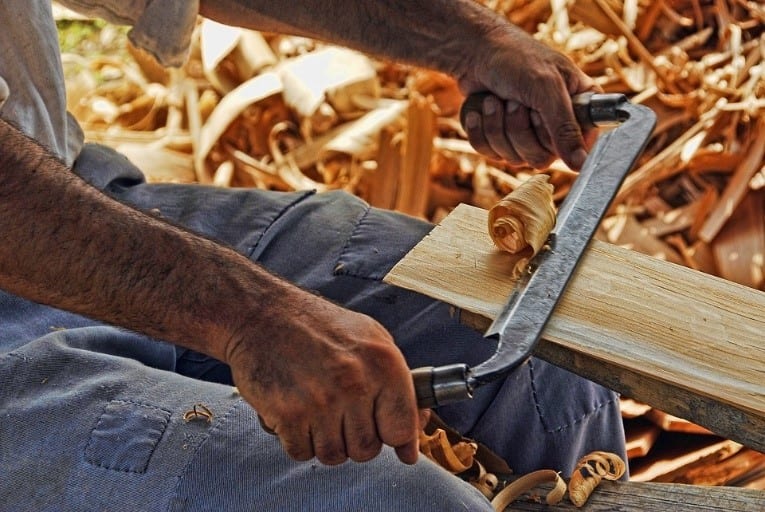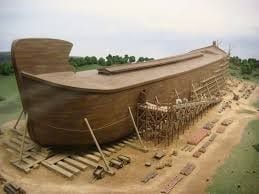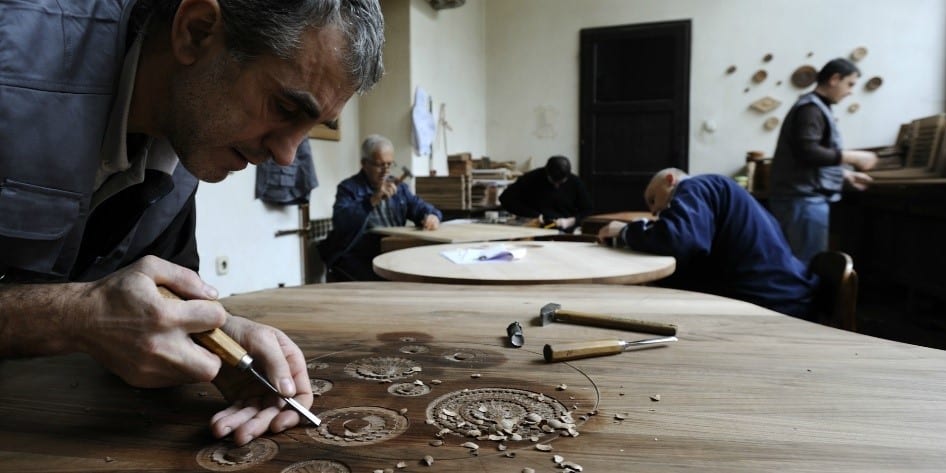Carpentry is a broad term that refers to the process of cutting, shaping, and installing building materials for various construction purposes.
Traditionally, carpenters used to be primarily engaged with rough work such as, for example, framing.
However, carpentry also refers to finer trades that include furniture building, as well as cabinetmaking.
In fact, it was all the way up until the end of the 19th century that carpenters also used to be engaged in timber framing.
Currently, timber framing is labeled as an old-fashioned branch of carpentry. But the ancient knowledge of the highly skilled carpenters who used to frame post-and-beam buildings is being looked upon with great respect.
Interestingly, as highlighted by the digital publication global experts of Open Access Government, timber frame construction has been actually growing in popularity in the last decades.
According to Gareth Barber, who is the Managing Director of the Stable Company, further research on timber framing is crucial as this is the ultimate environmental-friendly choice.
Nevertheless, it is important to highlight the fact that timber-framing knowledge of master carpenters is being put in the very spotlights of UNESCO’s list of intangible cultural heritage of humanity.
For instance, the number of experts of traditional Japanese carpentry was rapidly starting to decrease.

In order to ensure that the knowledge of the ancient crafts will not be lost, the authorities are trying to raise public awareness.
Unfortunately, many young people seem still rather uninterested in dedicating their time and efforts when it comes to complex crafts like traditional timber framing.
However, the art of carpentry is not lost. Instead, it is, indeed, rapidly developing.
Certainly, the massive technological boom is paving its way into contemporary carpentry faster than ever before.
But, after all, what does it take to become a master carpenter?
Join us on our journey to re-discovering the magic of carpentry. Below, we will dig deeper into the process of climbing the steep ladder from apprentice to becoming a master carpenter.
Brief Introduction to Carpentry throughout the Course of History
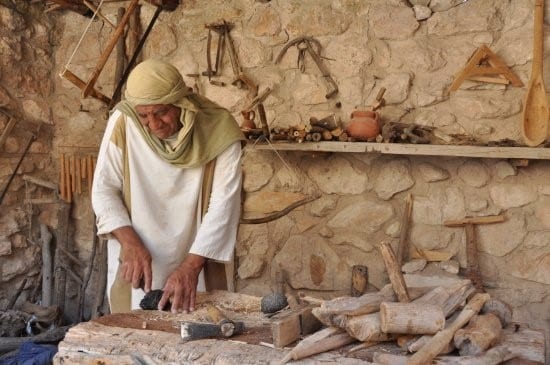
The word “carpenter” is of Old French origin.
However, the French term “carpentier” is derived from the Latin word “carpentarius.”
Meanwhile, according to the American heritage dictionary of the English language “carpentarius” translates into “maker of a carriage.”
Without any doubt, wood is one of the earliest building materials known to mankind.
The very first evidence of carpentry date back to approximately 7000 years ago.
It was in Eastern Germany that archeologists made the intriguing discovery of the oldest evidence of carpentry, attributing the very rise of the ancient craft to the Neolithic period.
However, there are further assumptions signifying that carpentry may have actually emerged much earlier throughout the course of history.
Above all, due to the perishability of wood, it is highly likely that earlier evidence than the excavations in Eastern Germany was simply subjected to deterioration, and hence, remain unfound.
Little by little, the ability of our ancestors to shape wood improved with the introduction of more advanced tools during the transition from the Stone Age through the Bronze Age and all the way up to the Iron Age.

Nevertheless, there any evidence about carpentry before the invention of the printing press during the 15th century is very scarce. Until then, the entire spectrum of knowledge, skills, and traditions related to carpentry was passed only orally.
However, a series of well-preserved monuments such as the stave churches in Norway that are estimated to date back to the 12th and 13th century prove that carpentry was not only popular and well-known but that it had also reached a very high level of development.

Ultimately, some of the oldest examples of carpentry are none other but the wooden temples in China, such as the Nanchan Temple that was built in 782.
Amazingly, the very founding of America is intricately connected to carpentry.
That’s because one of the reasons that lead the explorers towards the lands of America was the desire to extract the possible resources from the country in order to use the obtained materials in the building of ships and various architectural constructions across Europe.
By the 16th century, sawmills were starting to get popular in Europe.
In the 18th century, the Industrial Revolution changed carpentry forever with the invention of cut nails and the steam engine.
Gradually but surely, carpentry reached new heights of development and recognition in terms of viability to humanity.
In the 19th century, hand-held power tools first started to become mass produced and widely available.
In the late 20th century, plywood and chemically treated lumber also began to be massively applied for carpentry purposes with a mind to eliminating the burden of heavy-lifting work related to carpentry.
What Does it Take to Become a Master Carpenter?

For a start, it’s important to keep in mind that carpentry education can be both formal, as well as non-formal.
Regardless of the type of carpentry education, the path to becoming a master carpenter is the same for formal, as well as non-formal participants.
Firstly, a carpenter begins his/her training as an apprentice.
Secondly, the carpenter can become a journeyman.
Finally, depending on the skills, experience, and competency, a journeyman can reach the status of a master carpenter.
When it comes to formal carpentry education, carpenters-to-be can enroll in special classes, courses, and programmes. At the end of their study, carpenters end up obtaining a degree that allows them to practice the craft of carpentry.
Interestingly, in America, a whopping 98.5% of all carpenters are male.
According to statistics from 1999, carpentry is the fourth most male-dominated occupation in the USA.
A more recent summary published by the Bureau of Labor Statistics points out to the fact that the number of jobs related to carpentry in the USA has reached the mind-blowing number of 1 025 600 in the year 2016.
On another note, the job outlook in the carpentry sector is estimated at 8%. In terms of estimating the pace of job outlook, carpentry ranks “as fast as average.”
Meanwhile, non-formal carpentry practices evolve solely around apprenticeship.
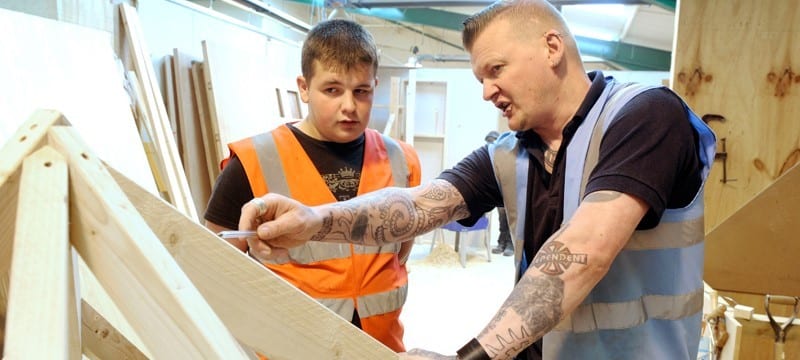
Apprentice carpenter involved in formal carpentry education – Image Source
In order to become a master carpenter non-formally, one can choose to learn the secrets of the craft by being directly involved in the process of helping another master carpenter.
It is both through observation, as well as assistance that the apprentice can develop the right set of skills.
All in all, non-formal carpentry education usually does not provide any certification. However, an apprentice can actually obtain a journeyman status by paying a union entry fee.
After paying the union entry fee, a journeyman’s card that gives the journeyman the legal right to work as an official part of a carpentry crew can be obtained.
Also, whether an apprentice will actually develop the skills needed to practice carpentry professionally is not guaranteed either.
It is the carpenter foreman’s right to further test and evaluates the skills of the candidates, even if they do possess a document that proves their qualification.
If by any chance, the head carpenter is not satisfied with the level of skills demonstrated by the candidates, he has the legal right to dismiss them.
Apprenticeship Carpenters
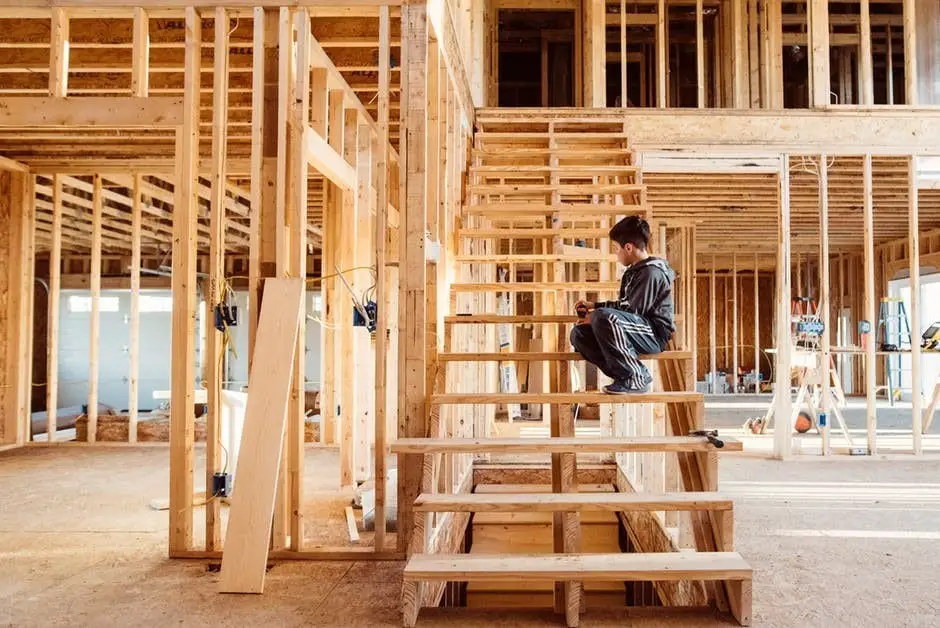
Typically, when it comes to non-formal carpentry education there are no strict rules regarding the period of time an apprentice can spend before he/she becomes a journeyman.
However, this is not the case with formal carpentry education where there are specific regulations.
As a rule of thumb, apprenticeship training usually takes three to four years to complete before the former apprentice can attain the status of a journeyman.
But prior to getting involved in the apprenticeship training, the carpenters-to-be first need to enroll in a pre-apprenticeship training.
During the course of pre-apprenticeship training, the students spend an average of three months learning the very basics of carpentry.
The basics of carpentry include mastering trade terminology, developing the skills of working safely with both hand and power tools, as well as studying mathematics.
Calisthenics is also part of the pre-apprenticeship training of construction-carpentry trainees since it is crucially important that the students are well-prepared for the physical aspect of the work.
Journeyman Carpenters
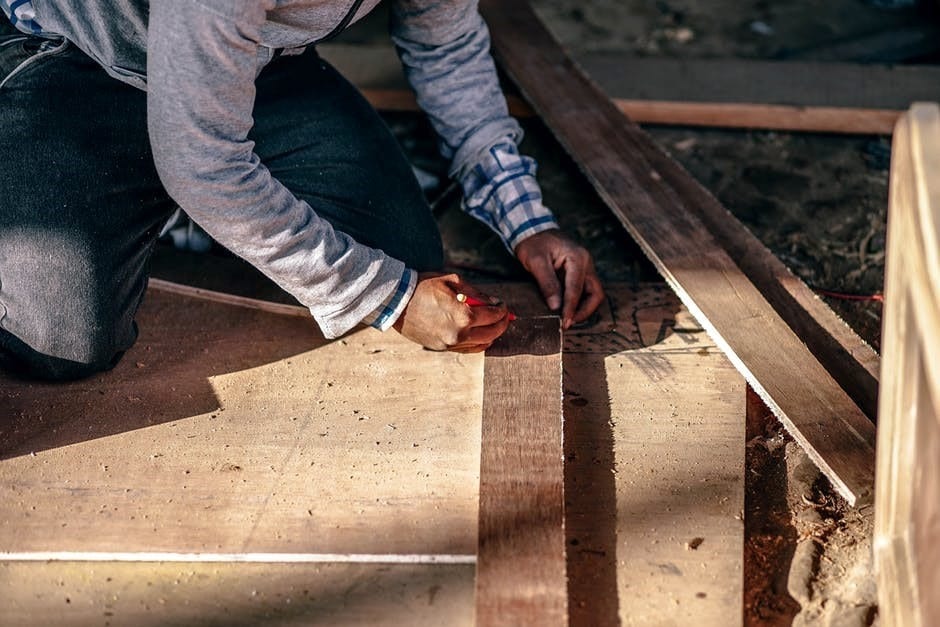
Back in the 19th century and all the way up into the early 20th century, a person who successfully climbed the next step of his/her carpentry education to become a journeyman had to travel to another region of the country.
That’s because it was otherwise impossible to learn the building techniques and styles of the particular area.
However, nowadays, the situation has completely changed.
Thus, journeymen can obtain their degree after completing the pre-apprenticeship training, as well as the three to four years of apprentice education including on-the-job-field training.
Certainly, mastering the skills needed to become a journeyman cannot happen by simply learning through observation and studying the material.
Instead, it is the practice that makes perfection, and this rule applies perfectly to the art of carpentry.
Master Carpenters

Above all, becoming a master carpenter requires a truly excellent set of skills in the field of carpentry.
Ultimately,one cannot possibly become a master carpenter before first working as a journeyman for a while.
There is no strict period within which a journeyman is expected to learn everything needed to turn into a master carpenter. Instead, this is a highly personal, absolutely individual matter.
In fact, in countries like Japan, for example, becoming a master carpenter proves to be a very challenging process.
All in all, whether one will climb all the way up from apprentice to master carpenter is a long yet beautiful journey.
Most certainly, this path cannot be walked without feeling the utmost desire, inner strength, and passion to dedicate yourself to the craft of carpentry.
Final Food for Thought

Carpentry is a one-of-a-kind skilled trade.
Unfortunately, way too many of us tend to think that carpentry is mostly related to putting a lot of physical efforts.
However, carpentry is actually “as much an intellectual as a physical activity” – beautifully explained in the paper titled Carpentry Is Intellectual Work by Robert R. Sherman, the University of Florida—Emeritus.
Nowadays, carpentry is also rapidly developing in the spirit of environmental-friendliness. Thus, both green carpentry, as well as recycled carpentry are on the rise.
Being involved in working with one of the earliest materials exploited by mankind – wood – being a carpenter is not merely a career path.
Instead, carpentry is a calling.
Nevertheless, carpentry can be one of the most pleasurable hobbies; a beautiful moment of peace and tranquility when one re-discovers the ancient secrets of working with wood.
Generations of gifted apprentices who managed to turn into journeymen and further chase their dream of becoming master carpenters prove that carpentry is a profession that cannot be possibly labeled as simply a way of earning money.
“I spend a lot of time doing carpentry. Sometimes, there is nothing that gives me the contentment that sawing a piece of wood does”
Abbas Kiarostami
